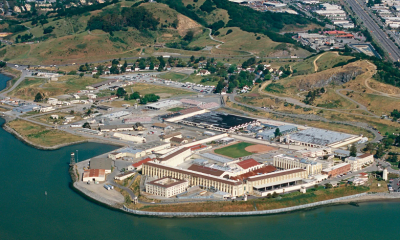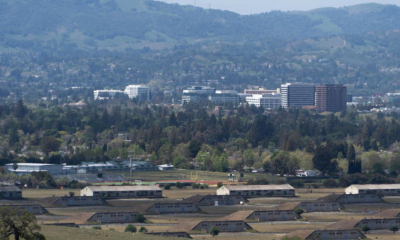San Francisco
Meet the Artist Illustrating COVID-19 Disparities in San Francisco
The past six months have been punctuated by brutality and inequality. The COVID-19 pandemic. Police killing people of color, and the subsequent, ongoing Black Lives Matter protests. Police use of teargas at protests during an infectious outbreak, which helps spread the virus and worsens symptoms.
It’s in this moment that biomedical illustrator Farah Hamade, the inaugural artist in residence at UCSF Library, is working to untangle what she calls “a whole web” of interrelated issues impacting San Franciscans during this challenging year.
For her interactive storytelling project, “The City is a Body,” Hamade is collecting San Franciscans’ experiences with the COVID-19 pandemic. “The virus doesn’t care who you are, but who catches it has a lot to do with systemic disparities,” she says. “Systemic racism impacts access to healthcare, housing and homelessness, and exacerbates public health crises.”
She plans to use animation and data visualization to create an interactive portrait of people’s lives during this time of overlapping, unrelenting challenges. “The pandemic has exposed so many issues that already existed,” she adds.
The residency awarded Hamade $6,000 to cover materials, travel and other related expenses. Because of the myriad complications posed by the pandemic, however, Hamade is not physically in residence at the library. After visiting in person in February, she is working on her project remotely and has full access to special collections and assistance from library archives staff, as well as digital tools in the library’s Makers Lab.
In addition to being the first year the library is offering the program, the residency is also Hamade’s first. Born and raised in San Francisco, Hamade has a bachelor of science in neurobiology, physiology and behavior from UC Davis and took courses in anthropology and studio art during her undergraduate studies. This summer, she graduated from the University of Toronto with a masters in biomedical communications.
The public most often sees medical illustrations in pharmaceutical advertising. But the art form has other applications, such as the already-iconic spiky blob that two Centers for Disease Control and Prevention (CDC) illustrators created to help individuals visualize the novel coronavirus.
This arts-focused residency offered Hamade an opportunity to build on her previous work in clinical research, focusing on creative, humanities-based storytelling that incorporates scientific data. She also has plenty of expert guidance in refining her still-in-flux story-collecting methodology, including a member of the residency selection committee, Dr. Emily Silverman, an internal medicine physician and creator of the live show and podcast, The Nocturnists. “I’m not an anthropologist,” Hamade says “but I am a person who is trying to take information that exists and visually communicate it to the public.”
Hamade’s work will contribute to the library’s rich archive of materials from other pandemics, including one that disproportionately impacted San Franciscans: the HIV/AIDS pandemic. Since the city shut down due to COVID-19, library staff has focused even more on digitizing its AIDS-related collections, which preserve the legacies of UCSF physicians and researchers who continue to be on the front lines of AIDS treatments and possible cures.
When it comes to patient and survivor stories, though, “We do have a lot of silences and gaps,” says Polina Ilieva, university archivist and head of archives and special collections. She sees this residency as one way to highlight how open and collaborative working with public archives can be. “Quite often, archives—even at a public university—are seen as unreachable by the general public,” she says. The UCSF Library staff is curating chronicles about life during COVID-19 to which members of the public are encouraged to contribute, and from which Hamade may also draw stories for her project.
The artist-in-residence program requirements include teaching as another way to engage the public, and so far, Hamade has conducted two virtual workshops on storytelling during the pandemic. One benefit to holding classes online is that people who wouldn’t have been able to attend otherwise have joined, or can watch the recorded webinars at their own pace.
“Everyone has Zoom fatigue, but I still feel like we’re having good, interactive conversations,” Hamade says. Ilieva adds, “The work that participants have been sharing is really moving.” The next virtual workshop will be held in October as part of the Bay Area Science Festival.
Before the pandemic, Hamade planned to curate an exhibition to welcome public feedback about disparities San Franciscans have experienced, and their ideas for ways to improve systemic inequalities. Now, she plans to create an interactive website to facilitate dialogue online.
She noted that comprehensively documenting the numerous struggles exacerbated by the pandemic is a daunting but important challenge, especially in terms of highlighting issues that disproportionately impact communities of color and undocumented individuals.
“I don’t know how many factors I can touch on in one project,” she says. “But 50 years down the line, people can look at this and get a better understanding of what this moment was like.”






















